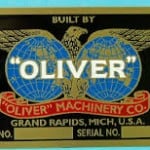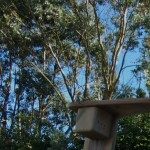Setting a Stanley 101 Style Block Plane
Welcome! / Forums / General Woodworking Discussions / Tools and Tool Maintenance/Restoration / Setting a Stanley 101 Style Block Plane
- This topic has 12 replies, 8 voices, and was last updated 6 years, 7 months ago by
Allen Curry.
-
AuthorPosts
-
2 September 2017 at 12:32 am #315434
I have a 1940-1955 vintage block plane that looks similar to the one in the attachment. The plane has no mechanical depth adjustment. I think it sets like a wooden plane, but I cannot seem to set it to take very thin shavings. Any advise would be much appreciated, and as I am a beginner, I would appreciate detailed instructions if you can provide them.
Thanks very much,
Allen
Attachments:
You must be logged in to view attached files.
Allen,
You’re right, these are set same as a wooden wedge plane.
They’re fussy. Start by setting the blade bevel down in the plane. The blade should be set back so that no shaving can be taken.Tighten the thumb screw.
Use a small hammer to LIGHTLY tap the blade to advance. Test taking a shaving on a narrow piece of wood….No shaving? Repeat tap and test.
Try to keep the taps about the same force and don’t hurry.
I just did this with my squirrel tail version of your plane and it took 3 iterations of the process to get to 2 1/2 thou shaving thickness.
Best,
Craig
 2 September 2017 at 7:51 pm #315453
2 September 2017 at 7:51 pm #315453Craig,
Thanks very much. I really appreciate the quick reply. I’m going to the shop this minute and practice setting the plane.
Have a great day,
Allen
Unlike most block planes, the 100 and 101 have a bedding angle of about 45 degrees, as seen on most bench planes, and the iron is installed the same way–bevel down.
If you are ever unsure about whether a plane iron goes in bevel up or bevel down, just remember that the people who made that iron were proud of their company’s name and wanted you to be able to read it when the plane is assembled.
-
This reply was modified 6 years, 7 months ago by
Dave Ring.
3 September 2017 at 12:29 am #315459Dave. Assuming the logo will face so you can see it doesn’t always work.
The numbers 9,11, 11 1/2, and 25, ( all in the block plane class) among others, were bevel up planes that used the same cutters as bevel down planes and often came with a cutter, either new or replacement, that had the logo on the “wrong” side. If you are lucky, the logo will be stamped on both sides.
Just looking at the bed angle is probably more reliable. If it’s less than about 40º it is bevel up.
True enough, Larry, but the planes that you cite are all relatively rare collector’s items that most of us (myself included) have never actually seen and probably never will have occasion to use. (For info on these and most other Stanley planes, readers should have a look at “Patrick’s Blood and Gore” at supertool.com.)
Although I have run across at least one iron which a previous owner had reground with the bevel reversed I think that the rule that I suggested above is easy to remember and will serve nearly 100% of the time.
Dave
-
This reply was modified 6 years, 7 months ago by
Dave Ring.
7 September 2017 at 3:09 am #315613Adjusting takes a little practice. I find for lighter taps, a hand of screwdriver works well. Plus make sure it is sharp.
Paul showed us how to set a Stanley 75 (with a similar clamp). He said “release the tension screw slightly, then tweak the iron with your fingertips”. He also says the Stanley 78 should never have passed the design stage!
I figured they were all difficult to use. I’ve never been able to get my Stanley 103 just right. Perhaps that’s why it was £3.
I’ll try the tapping technique.What works for me is to set it down on the workbench with the blade on and the cap loose. While laying flat push the iron as far as it will go, which will be at the same level roughly as the sole, as long as your workbench surface is flat. Then pre-tension the screw cap on, just enough that it wont wobble loose when you lift up the plane from the bench.
From here, give the blade an ever so light nudge (which I think is a gentler term for tap) further, with a small piece of wood or stick. Then tighten down the screw cap. If you got the blade and sole level with each other when the plane was set down, this slight nudge should be enough. It takes some feeling about to get familiar with how much to set for a light shaving.
27 September 2017 at 10:44 pm #324434Hello, Everyone and thanks so much for the posts. I’m getting much better setting my old block plane thanks to your advise.
Best regards,
Allen
-
This reply was modified 6 years, 7 months ago by
-
AuthorPosts
- You must be logged in to reply to this topic.
